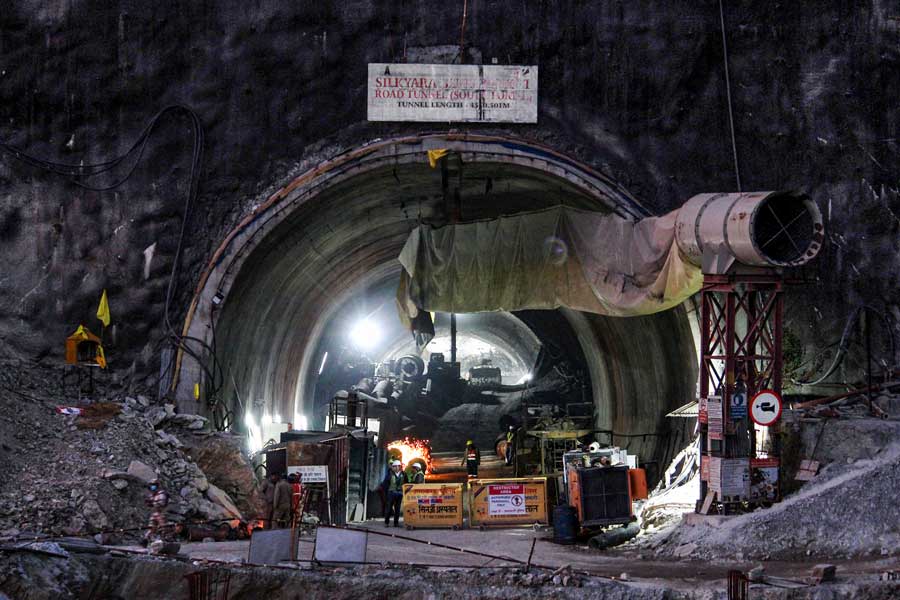An unstable chimney-shaped collapse and drills rotating rather than penetrating disintegrated rock debris could be among reasons for the slow progress in efforts to rescue the 41 workers trapped behind the collapsed tunnel segment in Uttarkashi, geotechnical engineers have said.
Rescuers drilling through the rubble have inserted wide pipes one after the other up to 45m and will need to drill another 12m to reach the workers trapped in the under-construction tunnel since November 12, officials at the site said on Wednesday afternoon.
Amid hopes that the workers might be extracted soon, engineers familiar with the challenges of digging tunnels said the behaviour of collapsed rubble of soil and rocks could account for why the rescue efforts had taken more than 10 days.
“One possibility is the formation of a chimney-shaped collapse along an unsupported tunnel section within the rubble,” said Ashish Juneja, professor of civil engineering at the Indian Institute of Technology, Bombay. “When you try to drill through this unstable debris, loose soil and rocks will keep falling from the top, stalling progress.”
“The more material you remove, the more it falls from the top,” Juneja told The Telegraph.
The other possibility, he said, could be how boulders or rocks embedded within the rubble respond to the drilling efforts. “The drills used are likely strong enough to penetrate and tear through the rock, but sometimes drills cause the boulder to just rotate and stay where it is. Then you can’t go further,” Juneja said. “In such circumstances, you would need to use chisels or hammers or other instruments to dislodge the boulder — and that can also slow progress.”
Civil engineers tasked with digging tunnels typically use a mix of controlled blasting and drilling, the blasting process to speed up the excavation. But blasting is not recommended during rescue operations of the type underway now. “The collapsed heap of material is already loose — a blast may actually bring more material and make things worse,” Juneja said.
The Uttarakhand government has asked a panel of technical experts to probe the collapse.
But engineers neither connected with the probe nor with the tunnel say vulnerabilities that remained undetected during geotechnical investigations before the excavation or inappropriate tunnel building protocols are possible explanations for such a collapse.
Overexcavation, for instance, without providing appropriate support through a standard process called shotcreting — spraying concrete that forms lining layers along the tunnel’s inside walls and roof — could cause instabilities and such a collapse.
The workers trapped within a 240m hollow zone behind the collapsed segment of the tunnel have been receiving food and water through a pipe-like channel created hours after the collapse.
A PTI report on Wednesday quoting a government statement said food items such as roti, vegetables, khichdi, oranges and bananas and other essentials such as toothpaste, soap and undergarments have also been supplied through a second supply channel created two days ago.











